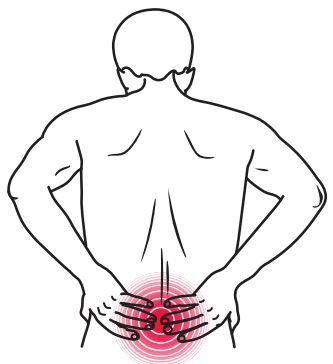Medication and pain
Most low back pain medication only helps to reduce pain. It can help you continue being active.
Medications have side effects. Before you start taking medications, make sure you have tried simple exercise like walking or stretching.
Main medication choices
Paracetamol
Used as the first option to treat low back pain. It can also be used to help with longer term low back pain problems.
This medication has very few side effects, and some people find it helps a lot.
Oral anti-inflammatory like ibuprofen (Nurofen)
Can be used to treat short term pain problems. Be aware this medication can interact with other medications and has lots of side effects.
Muscle relaxants and antidepressants
Can sometimes be used to help with severe pain, but can have harmful side effects.
Muscle relaxants can sometimes help with very acute problems, but there is a big risk of long term dependence (addiction).
Medication examples include Benzodiazepines (Diazepam) and Baclofen. Benzodiazepines are not effective for chronic low back pain.
Common side effects:
- drowsiness (feeling sleepy)
- dizziness
- falls
Opioids
Have lots of side effects, and play a very small role in managing low back pain. Opioids may help with short term pain relief, however only used for chronic (long-term) low back pain.
Opioids are usually not the right choice for back pain medication.
There is a big risk of overdose and dependence.
Examples of opioids include oxycodone (Endone), tramadol, and codeine.
- nausea (the urge to vomit)
- dizziness (feeling faint, weak, unsteady)
- falls (losing your balance)
- constipation


